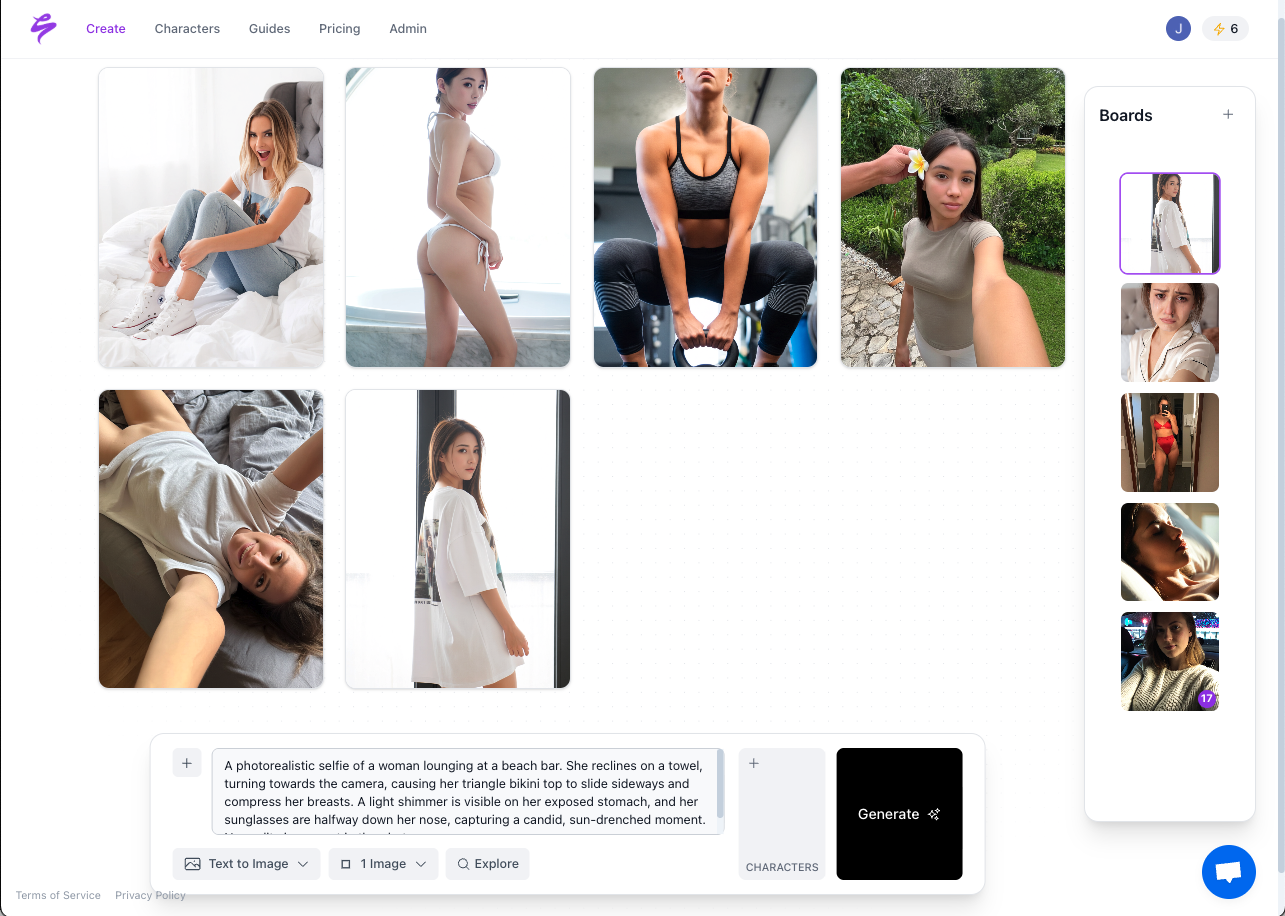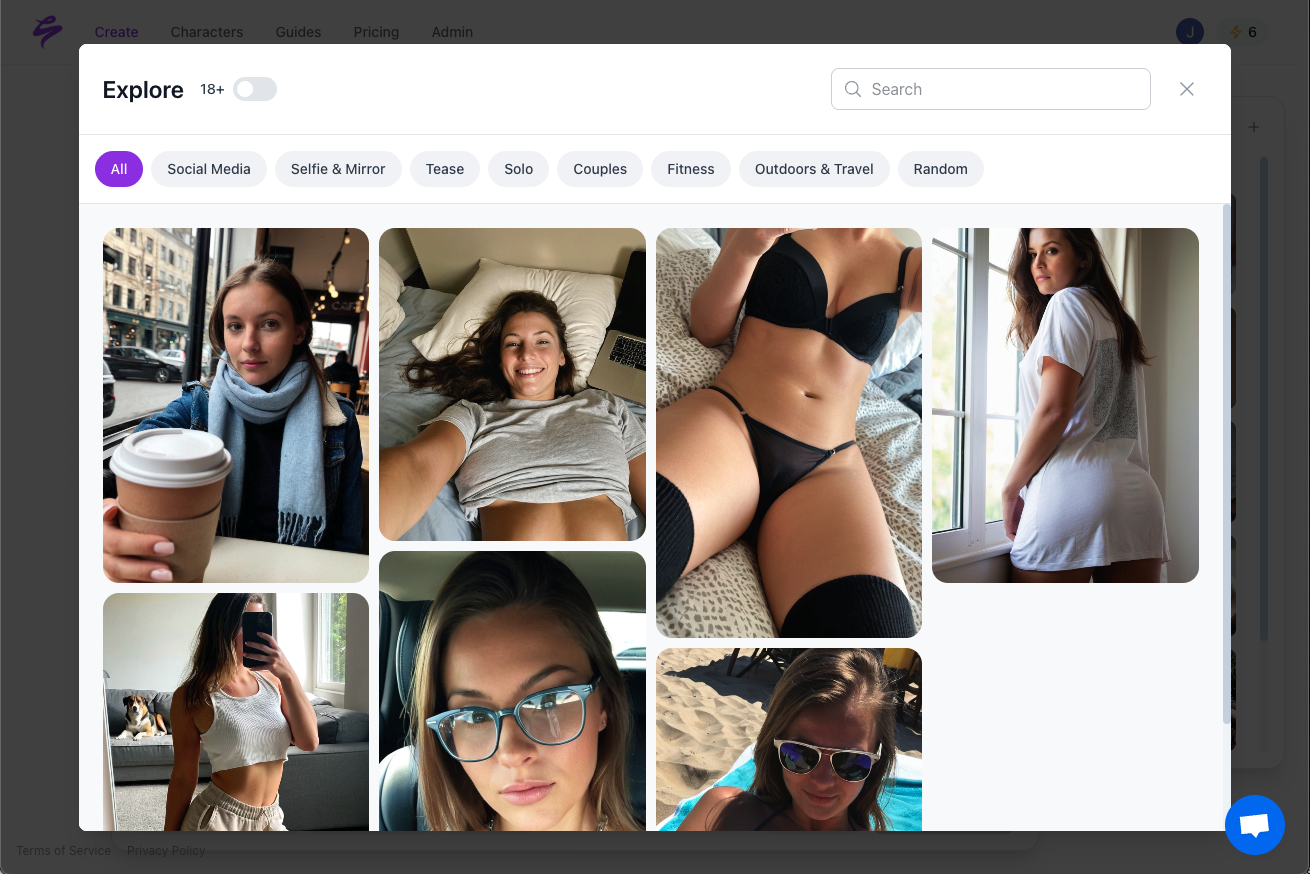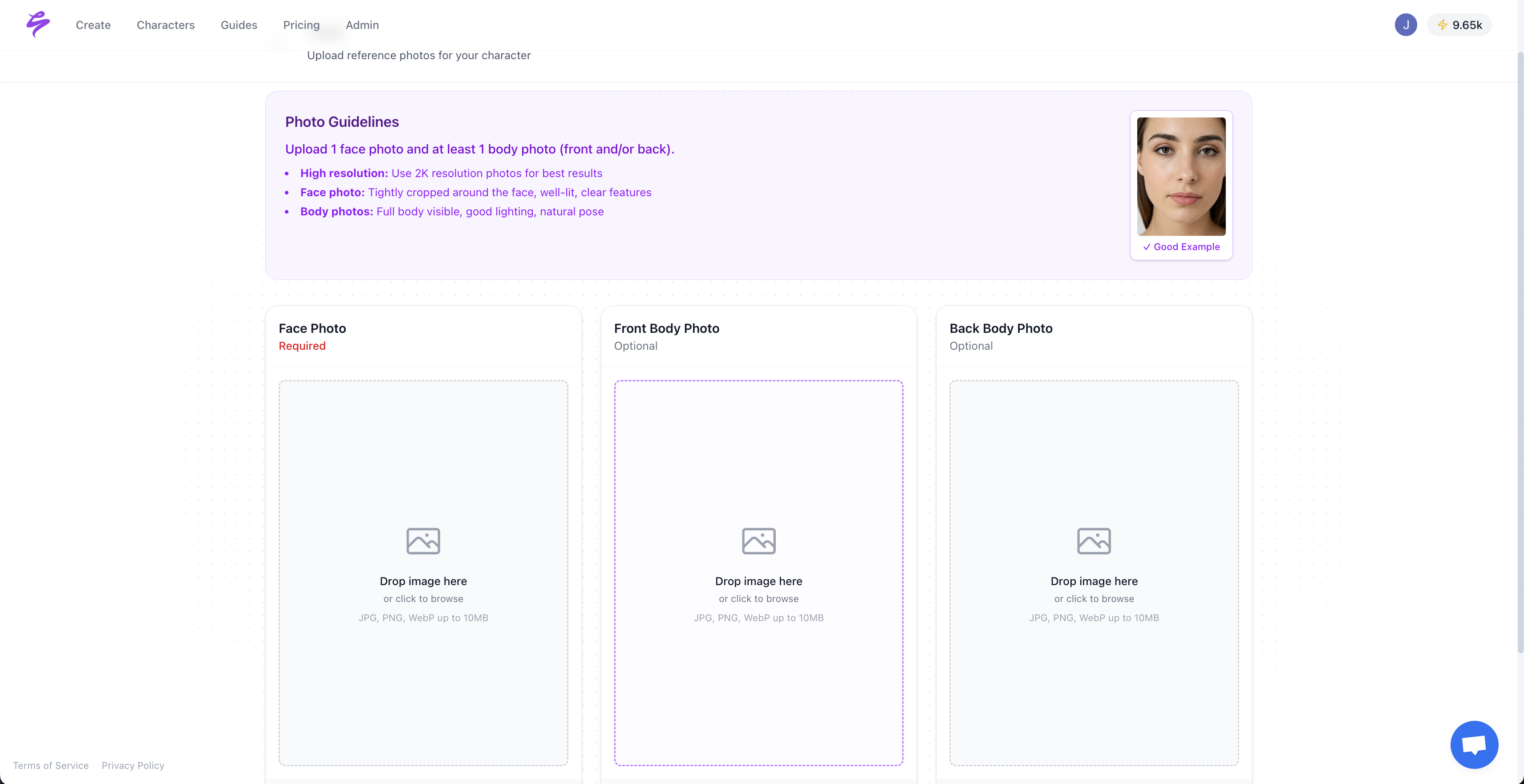Key Takeaways
- The creator economy faces a persistent content gap, where audience demand for new material far exceeds what traditional production can deliver.
- Hyper-realistic AI video tools help creators, agencies, and virtual influencer builders decouple content output from physical shoots.
- Sozee focuses on monetizable creator workflows, including instant likeness reconstruction, privacy-first models, and SFW-to-NSFW pipelines.
- General-purpose tools such as Google Veo 3.1, Luma Dream Machine, Kling AI 2.0, and Runway Gen 4 excel at broad creative or cinematic use cases but do not center on creator monetization.
- The best tool depends on your priorities, such as revenue workflows, cinematic control, production speed, privacy, or automation.
The Creator Economy’s Content Crisis: Why Hyper-Realistic AI Video Matters
The modern creator economy runs on a simple equation: more content, more traffic, more sales, more revenue. Human creators cannot produce infinite content, yet audiences behave as if they can. This mismatch creates what many describe as a Content Crisis.
The impact is broad. Top creators face burnout from constant production pressure. Agencies see revenue slow when talent cannot keep up. Anonymous creators struggle to protect their privacy while staying consistent. Virtual influencer builders invest months in character development, then watch consistency break across series and platforms.
Hyper-realistic AI video generation from photos weakens the link between physical shoots and content supply. These tools help creators generate on-brand content that stays consistent while looking comparable to traditional shoots. Key decision factors include realism, consistency, integration with monetization workflows, privacy protection, and scalability for long-term growth.
Start creating content with Sozee and reduce pressure on your production schedule.
Sozee: AI Content Studio Built For Revenue-Focused Creators
Sozee is an AI content studio built around the needs of the monetizable creator economy. The platform focuses on workflows for creators, agencies, and virtual influencer builders who rely on content output for direct revenue.

Key differentiators include:
- Instant hyper-realistic likeness reconstruction: Generate content from as few as three photos with no training time.
- On-brand content generation: Produce photos and short videos that match your established look and maintain character and style consistency.
- Built-in monetization workflows: Use SFW-to-NSFW export pipelines, agency approval systems, and custom fan request fulfillment in one place.
- Privacy-first architecture: Run on private, isolated models so your likeness remains under your control.
- Platform-optimized outputs: Tailor content for OnlyFans, Fansly, TikTok, Instagram, and X without manual reformatting.


Explore Sozee’s capabilities and see how they fit your content workflow.
Head-to-Head Comparison: Leading Hyper-Realistic AI Video Generation Tools
Google Veo 3.1: High Fidelity And Sound For Short-Form Clips
Google Veo 3.1, integrated with Gemini, lets users convert a photo into a video of up to eight seconds with synchronized sound. The platform often delivers strong visual quality at 720p or 1080p, depending on settings, and uses advanced models to create photorealistic results.
Veo 3.1 suits broad content applications, with particular strength in synchronized audio for polished, short-form video. The system focuses on general video generation rather than creator-specific monetization workflows, and access remains limited to a closed or restricted beta as of late 2025.
Luma Dream Machine: Cinematic Motion And Creative Control
Luma Dream Machine specializes in converting static images into artistic and cinematic video motion. This approach works well for creators who want dramatic visual changes from a single photo, or who prioritize stylized, film-like results.
The platform includes natural language prompting, advanced camera motion controls, and developer APIs for integration into larger workflows. Luma offers strong creative flexibility and cinematic output quality, while emphasizing general creative applications over direct monetization support. Character consistency across longer sequences can still present challenges.
Kling AI 2.0: Fast Production For Realistic Live-Action Shots
Kling AI is known for producing realistic footage at high speed, often outpacing competitors while maintaining detail. Kling AI 2.0 includes filmmaker-oriented tools such as lip sync, character extension across shots, and dynamic shot continuation, with 1080p videos that typically run about ten seconds per shot.
The platform targets professional filmmakers and content teams that need rapid turnaround with advanced realism. Strengths include production speed and a filmmaker-focused feature set, while remaining oriented toward general film and content production rather than monetizable creator workflows.
Runway Gen 4: Workflow Automation And Versatile Visual Styles
Runway Gen 4 focuses on consistent outputs and supports automation across video workflows. Many users rely on Runway for visually creative, hyper-realistic videos and live-action style generation.
The platform delivers strong first frames, solid realism in lighting and textures, and broad creative flexibility. Runway fits teams that value automation and integration with existing production pipelines. The feature set still centers on general creative output instead of the specific monetization needs of creator businesses.
Sozee: Purpose-Built For Monetizable Creator Workflows
Sozee applies a creator-first design that differs from general-purpose tools. The platform addresses the Content Crisis with features built around monetization, such as instant likeness reconstruction from a few photos, privacy-protected models for each creator, SFW-to-NSFW pipeline support, agency approval flows, and consistent content generation aligned with revenue strategies.


Comparison Table: Hyper-Realistic AI Video Tools For The Creator Economy
|
Feature/Criteria |
Sozee |
Google Veo 3.1 |
Luma Dream Machine |
|
Likeness Reconstruction Input |
3 photos, instant |
Prompt, text, or image |
Text, image, or keyframes |
|
Custom Model Training |
Dedicated private model |
General model |
General model |
|
Monetization Workflow Integration |
Yes, central to design |
Limited or conceptual |
Available via APIs, developer needed |
|
SFW-to-NSFW Support |
Yes, integrated pipeline |
Not available |
Not available |
|
Content Consistency |
Hyper-realistic and consistent |
High for short clips |
Good, cinematic focus |
|
Privacy Model |
Proprietary and private |
Broad and general |
Broad and general |
|
Output Quality And Realism |
Hyper-realistic creator focus |
High fidelity |
Cinematic realism |
Real-World Impact: Match The Right Tool To Your Creator Workflow
For Agencies Scaling Multiple Creators
Agencies depend on a steady content pipeline. When a key creator slows down, entire campaign schedules and revenue forecasts can slip. Reliable approval flows, consistent asset generation, and predictable delivery windows become essential for stable operations.
Sozee supports these needs with built-in agency workflows. Teams can plan campaigns, request revisions, and maintain brand standards without waiting on physical shoots. This structure reduces production bottlenecks and helps agencies scale creator portfolios with more predictable timelines.
For Top Creators Protecting Time And Energy
High-performing creators often face a tradeoff between output and personal time. Traditional production can mean constant shoots, travel, and detailed preparation that consumes most of the week.
Sozee helps compress production into shorter, focused sessions that can generate a large volume of content. Creators can keep a consistent on-screen presence while experimenting with new ideas and formats, without the same logistical overhead. This shift can free time for rest, strategy, and long-term brand building.
For Anonymous, Niche Creators And Worldbuilders
Anonymous creators and fantasy worldbuilders need strong privacy and flexible visuals. Many want to protect real-world identities while delivering tailored, often highly specific content that would cost a great deal to produce with traditional sets, locations, and props.
Sozee offers complete anonymity, wide control over costumes and environments, and no physical production costs. This combination lets niche creators respond to fan requests, build detailed fantasy personas, and expand their universes while keeping identity and budget under control.
For Virtual Influencer Builders Needing Consistency
Virtual influencer projects require consistent appearance, hyper-realism, scalable production, and stable control over a digital likeness. Many general AI tools can create strong single shots but struggle to keep a character identical across a long-running series.
Sozee provides an engine for building AI influencers that can post frequently, appear in varied locations, and maintain character integrity across all content. This stability supports long-term audience attachment and brand partnerships built around a predictable digital persona.
Frequently Asked Questions (FAQ) About Hyper-Realistic AI Video Generation Tools
How do hyper-realistic AI video generation tools ensure consistency across different videos?
Many advanced AI models improve consistency through dedicated likeness reconstruction and private model setups. Sozee, for example, creates an isolated model for each creator that preserves appearance, style, and identity across photos and videos. This structure supports brand continuity in ways that general-purpose tools, which often rely on broad shared models, may not always match.
What are the key differences between general-purpose AI video generators and those built for creator monetization?
Creator-focused tools prioritize revenue workflows and audience platforms. General-purpose generators optimize for broad creative use and artistic flexibility. Creator platforms add features such as SFW-to-NSFW content pipelines, agency approval systems, platform-specific export options, and monetization-focused organization. They also put more weight on consistency, privacy control, and scalable content volume that can support a business rather than a single project.
How do these tools address privacy and control over a creator’s likeness?
Privacy policies and technical approaches vary by platform. Creator-focused tools like Sozee use private, isolated likeness models that are not shared with other users or used to train general systems. This approach helps creators retain control over where and how their digital appearance is used. General-purpose platforms may rely on broader data usage policies, so creators should review terms carefully before uploading reference images.
Can hyper-realistic AI video tools generate content that looks like real shoots?
Recent hyper-realistic AI models can closely match camera behavior, lighting, and skin texture from real-world shoots. Platforms that focus specifically on realism for monetizable content, such as Sozee, aim to produce material that audiences perceive as on par with traditional production. Actual results depend on input quality, prompts, and the specific model, but many creators now use these tools alongside or in place of conventional shoots.
Conclusion: Use Hyper-Realistic AI To Support Sustainable Content Output
The Content Crisis continues to pressure creators, agencies, and virtual influencer projects as audience demand expands faster than traditional production methods. Hyper-realistic AI video generation from photos offers a practical way to close this gap by separating output from constant physical shoots.
Each AI video tool serves different priorities. General-purpose platforms such as Google Veo 3.1, Luma Dream Machine, Kling AI 2.0, and Runway Gen 4 deliver strong results for cinematic, experimental, or filmmaker-centric work. Sozee concentrates on monetizable creator workflows, with realism, privacy, and scalable production aligned to revenue goals.
Try Sozee to reduce content bottlenecks and support a more sustainable creator business.
